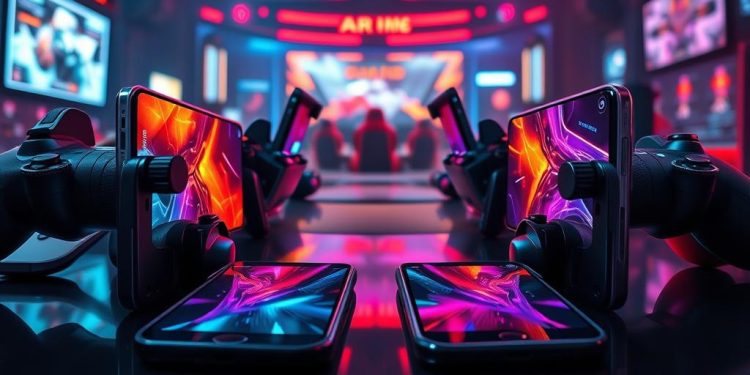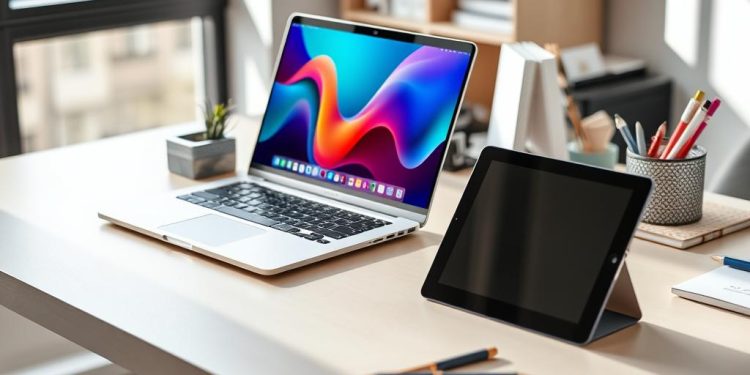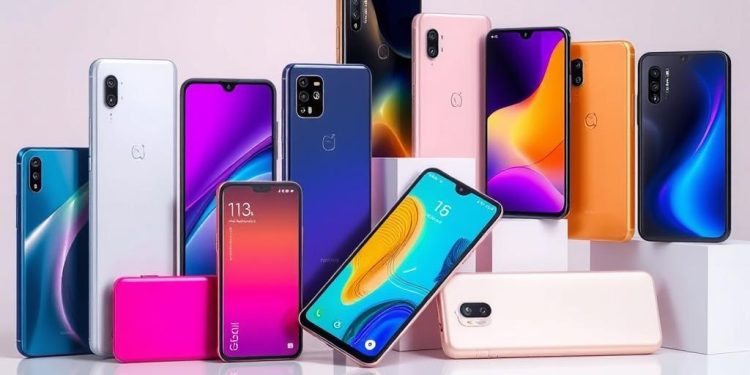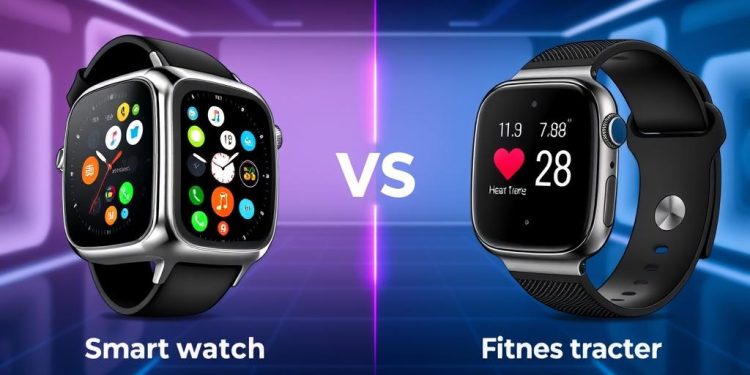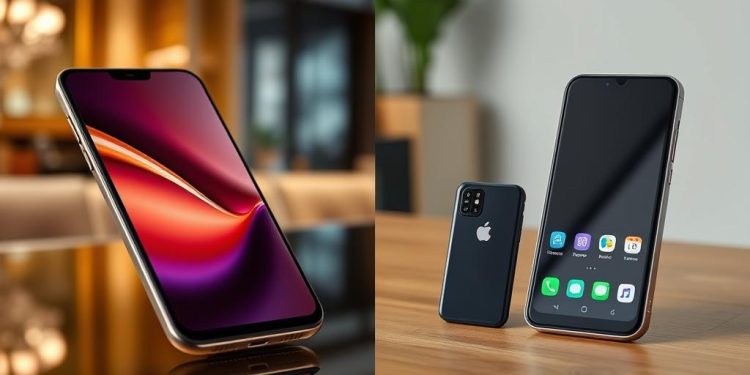Introduction to the Flagship Battle
The iPhone vs. Android debate is a significant aspect of the smartphone landscape, reflecting a clash between two dominant forces in flagship devices. As technology advances, both Apple and top Android manufacturers like Samsung and Google are pushing the envelope in terms of features, performance, and user experience. This article takes a closer look at the latest offerings—specifically the iPhone 16 series and the Samsung Galaxy S24 series—to provide insights that will help you determine which smartphone might align with your personal preferences.
From design aesthetics to performance benchmarks, we will delve into various comparisons that highlight each system’s strengths and weaknesses. As Android remains an open-source operating system, it enables brands like OnePlus and Motorola to develop customized devices, often at affordable price points. Meanwhile, Apple’s closed ecosystem emphasizes security and premium features. Ready to embark on this journey of smartphone comparison? Let’s dive in!
Introduction to the Flagship Battle
The smartphone showdown between the iPhone 16 and Samsung Galaxy S24 presents an exciting opportunity for tech enthusiasts. With both brands releasing their latest flagship smartphones, consumers are presented with innovative features and performance enhancements. Since the introduction of the first iPhone in 2007 and the Samsung Galaxy series in 2009, these smartphones have evolved significantly, impacting the mobile technology landscape.
The competition has intensified over the years, particularly with ongoing improvements in design, camera technology, and processing power. Consumers often find themselves choosing between the high-quality, curated experience offered by the iPhone 16 and the diverse array of models provided by Samsung, including the flagship Galaxy S24. With Samsung’s extended investment in research and development, innovation is at the forefront of their offerings.
As you navigate your options in this smartphone showdown, this article aims to dissect these flagship smartphones in detail, making it easier for you to determine which device suits your lifestyle and preferences best.
Design and Build Quality
When comparing flagship smartphones, design and build quality often stand out as top priorities for consumers. Apple emphasizes its iPhone design through a commitment to sleek aesthetics and premium materials, showcasing a meticulous eye for detail. On the flip side, Android design offers a variety of innovations, catering to users who appreciate customization and ergonomics.
iPhone Design Features
The iPhone 15 showcases Apple’s exceptional craftsmanship, characterized by its glass and stainless steel construction. This minimalist aesthetic is paired with a Ceramic Shield front cover, reputed to outperform traditional smartphone glass in durability. Users frequently report satisfaction with the tactile experience of the build quality, which has been a hallmark of Apple’s presentation. You may find that the iPhone’s conservative elegance appeals to those desiring sophistication, further reflected in the community’s overall satisfaction rate of 98% among iPhone users.
Android Design Variations
In contrast, Android design boasts a broader range of styles and materials. The Samsung Galaxy S24, for instance, uses Gorilla Glass Victus along with a lightweight aluminum body, creating a comfortable grip while maintaining resilience. Android devices often come equipped with ergonomic features, appealing to about 60% of users who value customization options over Apple’s limited offerings. Both iPhone and flagship Android models are rated IP68, ensuring they withstand dust and water exposure, although each brand’s aesthetic preferences lead to a choice that often reflects personal taste.
| Feature | iPhone 15 | Samsung Galaxy S24 |
|---|---|---|
| Build Material | Glass, Stainless Steel | Gorilla Glass Victus, Aluminum |
| Front Cover | Ceramic Shield | Gorilla Glass Victus |
| IP Rating | IP68 | IP68 |
| Weight | 203g | 196g |
| Customization Options | Limited | Extensive |
Your decision may hinge on your preference for either the classic appeal of iPhone design or the versatile Android design variations, each offering unique advantages in terms of build quality and user experience.
Performance Comparison: Speed and Efficiency
The performance of flagship smartphones significantly relies on their chipsets, which drive everything from daily tasks to advanced gaming. The iPhone 16 Pro Max showcases the power of the A18 chip, alongside 8GB of RAM, delivering impressive single-core capabilities ideal for graphics-intensive applications and everyday workflows. This exceptional iPhone performance sets a high benchmark for other devices in the market.
Chipsets: A Closer Look at iPhone and Android
Many Android flagships, including the Samsung Galaxy S24, are equipped with Qualcomm’s Snapdragon 8 Gen 3. This chipset provides robust multi-core performance, crucial for heavy multitasking and smooth operation across various apps. While the A18 chip focuses on single-core efficiency, its optimization helps the iPhone outperform in scenarios demanding high processing power.
Benchmark Scores and Real-World Performance
Recent benchmarking indicates that while iPhones generally achieve superior results in CPU-centric tests, advancements in the Snapdragon 8 Gen 3 have narrowed the gap, particularly in gaming where graphical performance remains crucial. In real-world applications, users consistently report that the integration of software and hardware on iPhones enables a more seamless experience. Here’s a summary of the comparative performance metrics:
| Device | Chipset | Single-Core Score | Multi-Core Score | Notable Features |
|---|---|---|---|---|
| iPhone 16 Pro Max | A18 Chip | 1,900 | 5,400 | Exceptional optimization, iOS integration |
| Samsung Galaxy S24 | Snapdragon 8 Gen 3 | 1,800 | 4,800 | Efficient multi-tasking, gaming performance |
Although Android performance presents competitive capabilities, iPhones tend to feel faster and more responsive due to fewer background processes and bloatware, creating a smoother user journey. Ultimately, whether you favor the A18 chip or the Snapdragon 8 Gen 3 may depend on your specific needs and preferences in a flagship smartphone.
Camera Quality: Whose Photos Shine?
In the flagship smartphone market, camera quality remains a pivotal aspect where brands aim to outdo each other. The latest models from Apple and Samsung present unique advantages in photography. You may wonder which device provides the best camera experience. Let’s explore the different innovations and technologies offered in these flagship phones.
iPhone Camera Innovations
The iPhone 16 Pro Max boasts impressive iPhone camera features that cater to diverse photography needs. Highlighted by a 48MP main camera, this model excels in capturing high-resolution images rich in detail. Its dual 48MP ultrawide and telephoto lenses bring versatility, especially with 5x optical zoom, perfect for both casual and professional photography. Notably, you can shoot stunning 4K video at 120 fps, enhancing the cinematic experience. Night mode allows for clear shots in low-light conditions, maintaining sharpness even in challenging environments.
Android Camera Technology
The Galaxy S24 Ultra showcases remarkable Android camera capabilities. With a massive 200MP wide camera and a versatile quad-camera system, this phone is designed for creators. One standout feature includes its ability to record in 8K resolution, making it a top choice for those focused on video content. The phone includes multiple zoom options, with a unique 50MP telephoto lens offering 5x optical zoom. Users have noticed the S24 Ultra produces slightly brighter images, particularly in low-light and nighttime scenarios, outshining the iPhone in some aspects. Moreover, its advanced AI technologies enhance both photo and video quality, contributing significantly to your photography experience.
Operating System: iOS vs. Android
The ongoing rivalry between iOS and Android revolves around user interface preferences and various security aspects. Each operating system aims to enhance user experience differently, catering to distinct audiences with unique priorities.
User Interface and Experience
iOS features a sleek, user-friendly interface that integrates seamlessly with other Apple products. This cohesion ensures that tasks like file sharing are effortless, particularly with tools like AirDrop. The layout and interaction design encourage uncomplicated navigation, making it appealing to those who favor consistency.
In contrast, Android features a highly customizable user experience, granting users the freedom to adjust settings, layouts, and applications according to personal preferences. The availability of different launcher options on Android allows for extensive visual alterations, something iOS limits significantly. Both platforms support a multitude of apps, with Android hosting over 3 million on the Google Play Store compared to approximately 1.5 million on the Apple App Store. Nevertheless, the experience may vary due to potential compatibility issues across different Android devices.
Software Updates and Security
When it comes to security updates, Apple’s iOS ecosystem provides a more uniform experience. Users benefit from timely updates that bolster security, with recent versions of iOS accommodating devices as old as the iPhone 6S. Many iOS users report a satisfactory experience due to this consistent approach.
Android features a more fragmented update process. Delays in software upgrades can occur, often depending on the manufacturer, which poses challenges for some users. While both operating systems prioritize user data protection, iOS typically delivers a stronger emphasis on security aspects through stringent App Store controls and a closed ecosystem.
Overall, while iOS features guarantee a streamlined user experience, Android features allow for unparalleled customizability. Each system’s approach to security updates plays a crucial role in shaping the overall user experience.
| Feature | iOS | Android |
|---|---|---|
| App Store Size | ~1.5 million | ~3 million |
| Update Availability | Regular and consistent | Varies by manufacturer |
| User Customization | Limited | Highly customizable |
| Average App Update Frequency | Slower | 21% faster |
| Supporting Languages | 40 | 100+ |
| Preferred Navigation Tool (Maps) | Apple Maps | Google Maps |
| Notification Management Satisfaction | 74% | 85% |
iPhone vs. Android: Ecosystem and Features
When considering the differences between the iPhone and Android devices, the smartphone ecosystem plays a crucial role. Apple’s iOS creates a tightly knit environment where all your devices work harmoniously together. Features like AirDrop and Handoff streamline device integration, allowing you to transfer files effortlessly and transition between devices without any hiccups. In contrast, Android operates within a more diverse ecosystem, compatible with myriad third-party applications and gadgets, appealing to users seeking a customizable experience.
Integration with Other Devices
Device integration is where Apple holds a significant advantage. With continuous updates and a seamless user experience, features such as iCloud sync data across all your devices, whether you’re on an iPhone, iPad, or Mac. This unfaltering connectivity ensures that you can pick up right where you left off, regardless of the device you are using.
On the Android side, the flexibility allows you to pair your smartphone with an array of devices, including smart TVs, smartwatches, and even household appliances. While this broad compatibility promotes user choice, the integration may lack the cohesive nature found in Apple’s ecosystem. Users can adapt their settings and preferences to their liking, underscoring Android’s unique smartphone features.
Unique Features and Customization Options
Unique smartphone features set these two platforms apart. Apple excels in providing a straightforward user interface and features such as FaceTime and iMessage, which enrich the communication experience. The introduction of features like Animoji and Memoji add a personal touch that many users appreciate. On the other hand, Android excels in customization, offering options for themes, icons, and even custom ROMs for tech-savvy users. This adaptability allows you to make your device truly yours.
A comparison table highlights some of these differences:
| Feature | iPhone (iOS) | Android |
|---|---|---|
| Device Integration | Seamless with Apple devices (AirDrop, Handoff) | Diverse options with third-party devices |
| Customization | Limited to built-in options | Extensive with themes and custom ROMs |
| Messaging Features | iMessage with Animoji, Memoji | RCS for improved security |
| File Transfer | Simple via AirDrop | Varies by app |
| Software Updates | Simultaneous updates across all devices | Fragmented release schedule |
Ultimately, the choice between iPhone and Android often hinges on your priorities regarding the smartphone ecosystem, device integration, and unique smartphone features. Each platform presents its advantages, leaving you to decide what aligns best with your mobile lifestyle.
Conclusion
As you weigh your options in the iPhone vs. Android conclusion, it’s essential to understand that your flagship device choice should align with your individual preferences and usage habits. Both the iPhone 16 and Samsung Galaxy S24 present outstanding features, from their build quality and speed to impressive camera technologies that will satisfy any smartphone enthusiast.
With nearly 90% of older Americans owning a smartphone and replacement cycles averaging every five to six years, it’s crucial to consider factors such as design aesthetic, performance, and ecosystem compatibility in your smartphone decision. Whether you prioritize Apple’s cohesive ecosystem or the diversity that Android offers, evaluating these elements can lead to a rewarding experience.
Ultimately, an informed decision between these flagship devices can enhance your smartphone experience. By considering your unique needs against the strengths of iPhone and Android options, you’re likely to find a device that will serve you well for years to come.



